Edited May 22nd. 2023
Today’s post includes a variety of things that I have engaged with or that have been of interest recently.
A BOOK
“Time to choose, time to choose. To open and learn or run and lose.”
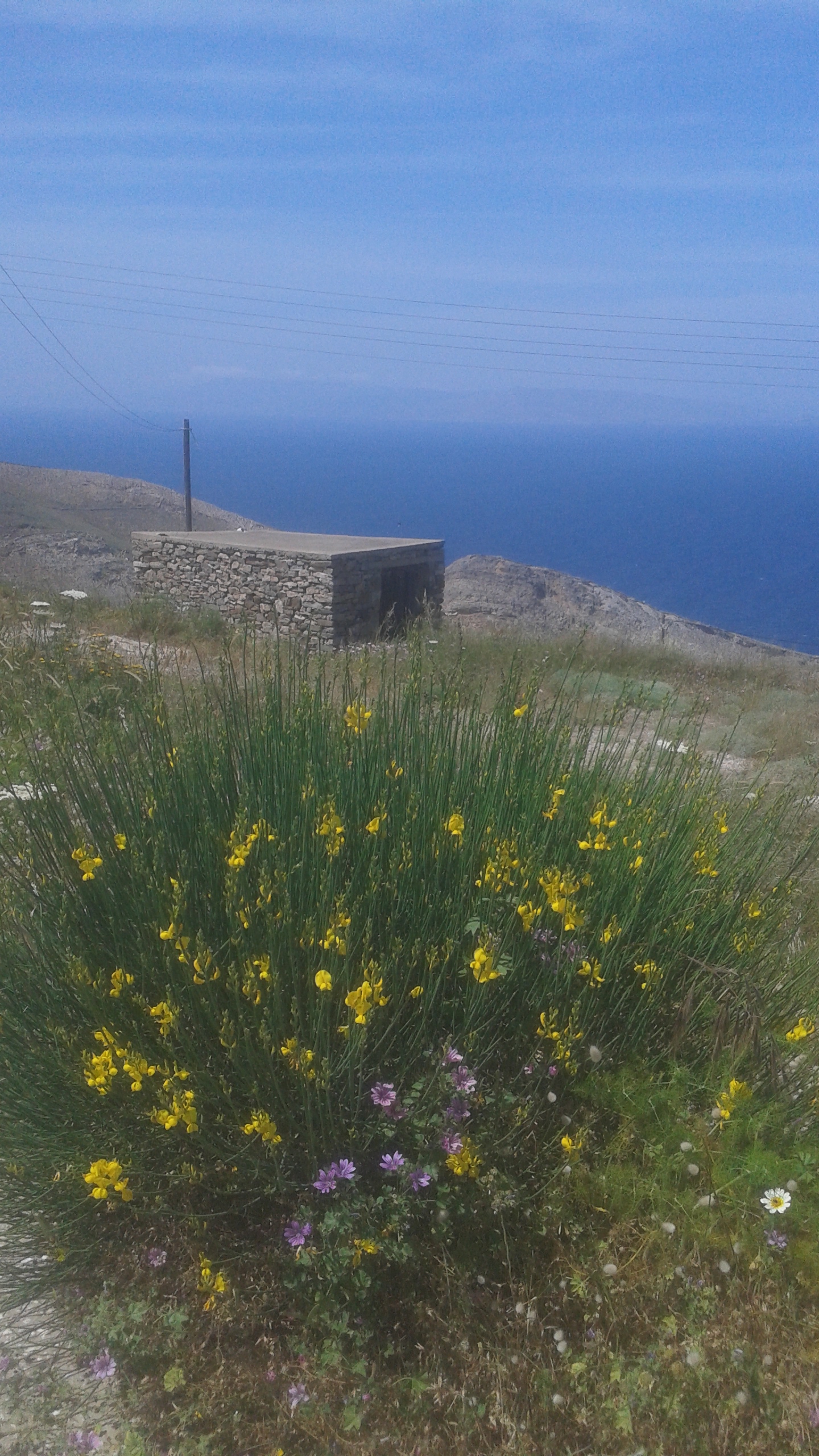
A few days ago I read Edgar and Elouise, an illustrated book by Sue Johnson, PhD. Sue Johnson developed Emotional Focused Therapy (EFT) for individuals, families and couples, which in a nutshell is a humanistic based approach developed in tandem with the theory and research findings of adult attachment. Attachment views humans as innately relational and wired for intimate bonding with others. This model prioritizes emotions and emotional regulation as the key organizing factors in our personal experience and in our key relationship interactions. It draws on the principles of attachment science, Carl Rogers and Salvador Minuchin’s concepts and techniques. I first encountered her work in 2011, as part of a clinical psychology programme I was doing. At the time the focus of EFT on attachment and emotions had felt a welcoming change to the heavily cognitive and behavioral orientation of the programme.
In the videos below Dr Sue Johnson and Ed Tronick show us moments of connection, disconnection and repair both in childhood and adulthood, and also, provide an overview of EFT:
https://www.youtube.com/watch?v=OyCHT9AbD_Y
https://www.youtube.com/watch?v=xQCg-jC25fo
To come back to the book, it’s for those aged 9 to 90 plus, is written for the inner child in all of us, has the form of a fairy tale and has been inspired by the author’s ten year old granddaughter. The story is set in an enchanted forest, featuring three grand pine trees, several inhabitants, like Edgar the crow, Elouise the fox, Spike the porcupine, Harry the hummingbird, Ronald the rabbit, country mice, flies and other creatures, and humans, which are called SOAs, the Scariest of All.
Take your place: a new story for Edgar
When we first meet Edgar he is a crow with very little confidence. Elouise the fox, on the other hand, seems to be ecstatic about her superiority and beauty. These two have a strong bond, but Elouise has gotten into the habit of putting poor Edgar down and making him feel really small. Spike the porcupine enters the scene. He is wise, well read, compassionate, with therapeutic skills. He knows how to guide others to find their fierceness, tap into the confidence of who they are, see the positive qualities in themselves and others. He also knows about threat responses, biases and obsessions, and old myths.
‘I am NOT the me you say you see! Love me. Help me to see the best of me!”
Spike asks Edgar: “But who gets to decide who you are? Do we do it ourselves or do we let others decide crow?” He tells him he can’t let Elouise and the SOAs (humans) determine who he is. He talks to Edgar about his ancestors and his family’s migration to find the sea, and about Nordic and Indigenous myths related to crows. He patiently guides him to find a new ‘me’ and choose his story about who he is carefully, and then advises him to try this new way of being and perceiving himself with his best friend, Elouise. Meanwhile, we learn that despite her nasty personality, Elouise has a soft heart and is actually the one who rescued Edgar as a tiny chick and the one who stuck around to raise him, which as we know is against all fox norms, forcing her to leave her pack and live as an outsider.
Spike helps other more timid, shy creatures find their fierceness and courage to act when they are scared. In the book we are informed in simple words about our biological responses to threat. He explains that it is natural and makes good sense to be afraid in a place like the forest because there are real threats. Edgar, in turn, soothes Ronald the timid little rabbit, who is scared all the time, even of his own shadow. He explains to him that rabbits “freeze and hide and only sometimes run. We ALL freeze and hide sometimes” and that “it is actually clever to go still and numb sometimes, but not so if you get stuck there…” because we are bigger than our fears. He also tells him that “Everything has a shadow…. It won’t eat you. It just follows you around in the sunshine.” A little girl also steps in and shows the little rabbit how to take a deep breath, in, in, in to stop the Trembles.
Then the pine trees and the animals face the biggest threat of all from the SOAs, “the most scared and mistaken of all creatures, who murder each other all the time. They call it a ‘battle’…”. They are coming to cut down the trees. Like humans each animal responds differently when scared and anxious, and thus, we learn about “obsessions”, which is when the same moves are repeated over and over to make the worries stop. For instance, Harry the hummingbird paces to-and-fro repeatedly when she’s afraid, but Edgar strokes her head and soothes her fear. He also tells her about his own obsessive behaviour when he was young.
Together we are stronger
Finally, we witness how these small animals are stronger together and how in togetherness they manage to find a way to stand against the big scary SOAs, in order to save the trees and their habitat, without freezing, giving up, doing frantic to-and-fros or running away.
ARTWORK
Speaking of cutting down trees last week we had to cut down a fig tree that had died in our garden. It was a sad affair for me, and I had being postponing the process for over a year, stubbornly watering the tree while knowing deep down that it was probably beyond redemption since last summer it produced no fruit and this year no leaves at all, its brittle branches breaking off and its bark cracked like the surface of dry land.
All three of the old fig trees we found here when we arrived have now died and have been cut down, signifying endings, but in their place three new trees have sprung up in other places. I don’t know whether they will produce any figs or figs as sweet as the ones this small tree gave us over many years in surprisingly great abundance. The experience has found its way in one of my drawings.
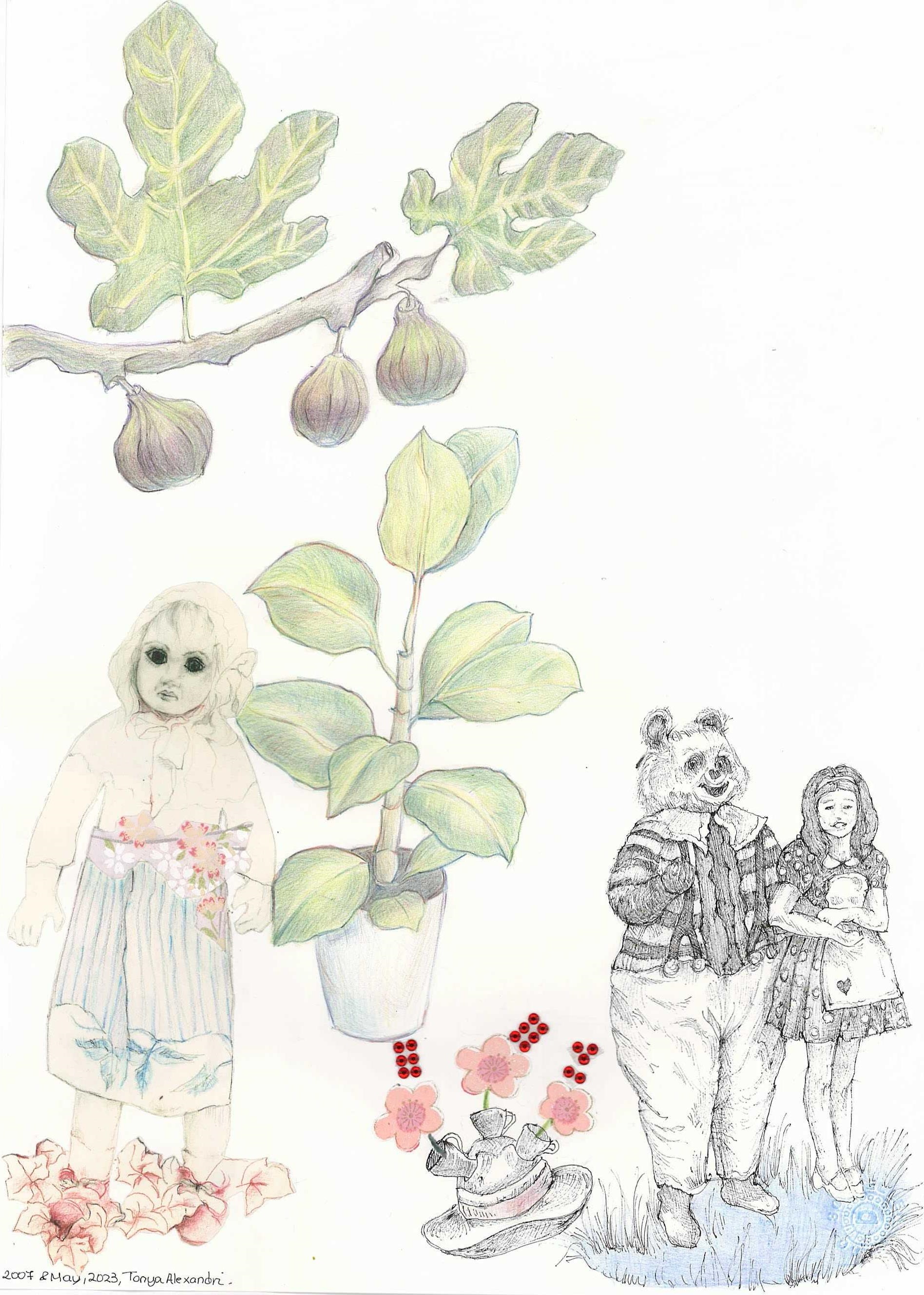
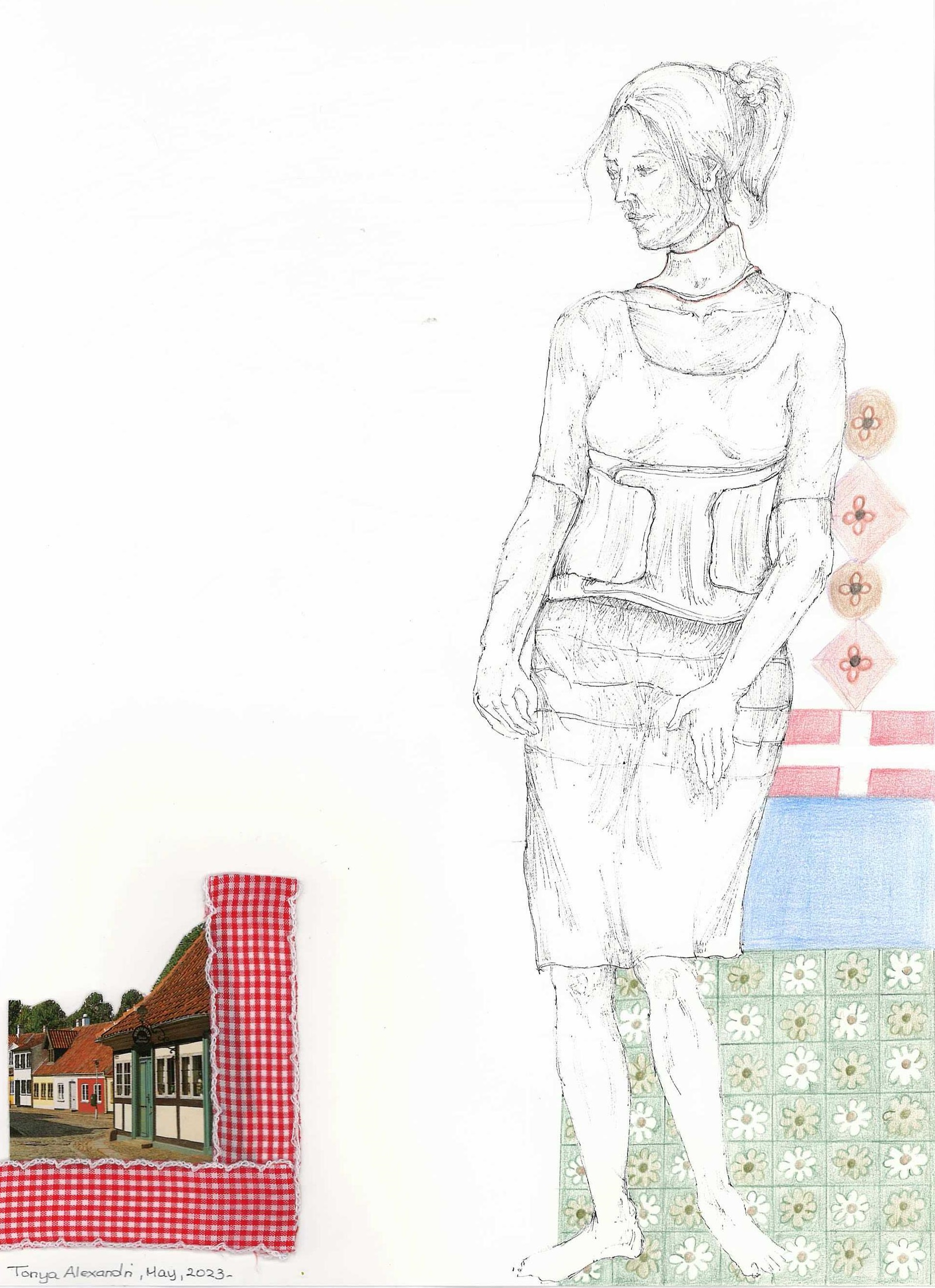
I’ve also included a few photos from a recent walk in the rockier, arid and less inhabited parts of the island… There are certain Greek naturescapes like these that I love, as well as, olive groves, fig trees and rocky shores, which along with the language make me viscerally aware of my Greek roots. While I was hiking with the cut tree in mind I thought of a poem I recently came across by the Greek poet, Αντώνης Σκιαθάς, The only loyal tenant.
“That’s how this summer ended / with embroidered heather / on a Sunday afternoon / in Astipalia**, / on whatever white / was in the sun’s metal sheet. / Unsuspecting, we left / but left a fig tree behind / rummaging through the doors / looking for the latch to survive the winter. / We trusted / that she wouldn’t empty the house. / That’s how the fig tree, winters and summers / listening to Scops owls and muffled cries / remained there all those nights / in the hall towards the cistern / the only faithful tenant”.
** Greek island
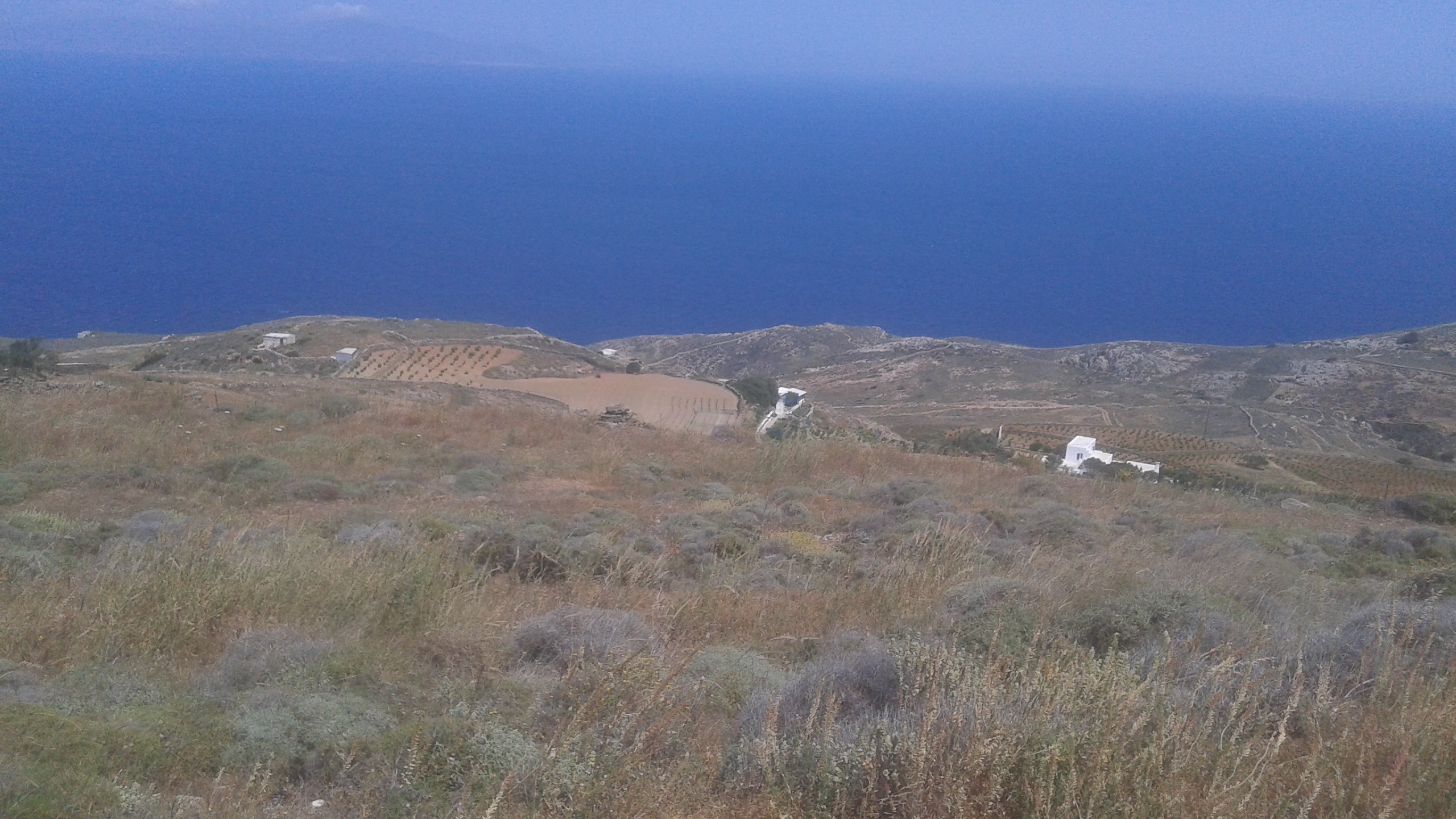
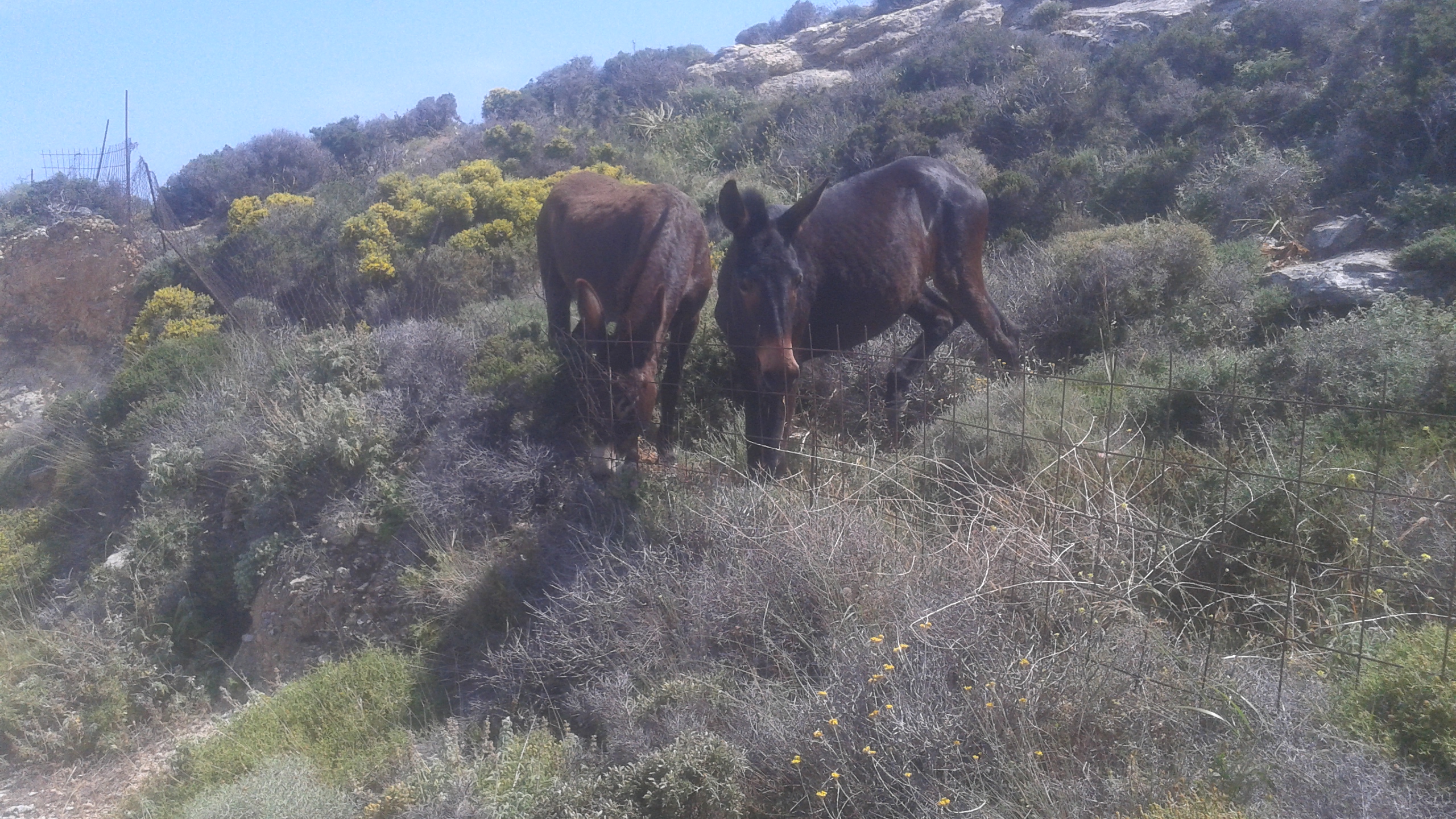
The Australian television pantomime style series Adventure Island screened from 1967 to 1972 created by Godfrey Philipp and John Michael Howson was for quite some time top children’s TV show. The story was moralistic with a strong “good over evil” motif. Usually the residents of a town on the island would be tricked in some way by one or more of the “baddies” and often dimwitted Clown, with sawdust for a brain and a very poor memory, would save the day. Each story was serialized over five days, Monday to Friday, and everything turned out alright by Friday. I think the earlier shows began with Nancy in an enchanted wood. She would sit down behind a tree-stump on which was poised a magic book. She began to read the story from the book and then we would see the story played out by the characters themselves. Some of these characters have also seeped into my artwork above.
Some of the more frequent characters were Liza, Mrs Flower Potts, Percy Panda and Dodo Panda, Clown, two Cockatoo and Matilda Mouse puppets, Samson the pussycat and several baddies, like Pirate Captain Crook and Miser Meanie, who counted his money consistently and set fines for things like chatting in the street,…, The characters possessed magic powers which they could call upon if the need arose. I came across an episode on YouTube, in which some magic seeds in a pot grow into a magic plant that produces glass like flowers with diamonds….
SIGN LANGUAGE
Another topic I’ve decided to include in this post, after listening to a singer’s decision to learn sign language to allow her art to be accessible to deaf people, has to do with the benefits of sign language. I was already aware of the many benefits of learning sign language not only for people who are deaf, but even for people who can hear, in terms of cognition, communication, visual-perceptual skills and spatial awareness.
I delved further into the topic and it seems that sign language is a very versatile language that can be used to talk underwater and taught even to babies with many benefits. Also, sign language can be particularly useful for those working in public roles such as police officers, doctors and other health workers, teachers and social workers. Some other significant benefits, other than been able to communicate with the millions of people with hearing deficits across the world and making art and knowledge more accessible to them, are:
Sign language has been found to help babies communicate better and sooner. According to studies, babies as young as eight months can sign words and imitate signs from their parents, which increases opportunities for parents and children to bond in positive ways and eliminates stress for a child in terms of communicating its needs. Some research suggests that this earlier communication can lead to greater levels of confidence in childhood and beyond, and that it can be beneficial for children with special needs or on the autism spectrum.
Sign language also seems to lead to higher reading levels in children and brings long term cognitive benefits for those who have been signing since they were babies or very young. It has been linked to higher IQ scores. Over the course of their 20 year longitudinal study Dr Linda Acredolo and Dr Susan Goodwyn have discovered that it leads to heightened reasoning skills, raises child’s IQ, babies speak much sooner and use more complex sentences, which sets them up for faster cognitive development.
Sign language enhances our ability to interpret body language because it involves facial expressions, a range of nonverbal signals that people use to communicate their feelings, and bodily cues and hand gestures. Moreover, studies conducted in the UK and elsewhere, have found that another area that seems to be positively impacted by the ability to use sign language is our reaction time and peripheral vision. Reaction time refers to the amount of time that passes between the moment we perceive something and the moment we respond to it and peripheral vision is what we can see around us without having to turn our head. These capacities play a key role in activities, such as, sports, driving or cycling, etc.
And finally, similarly to what is already suggested about how learning a second language can have a range of cognitive benefits, such as, enhancing creativity and even protecting against memory deterioration related diseases [and while there are differences between spoken and sign languages] research shows that the underlying neural processes are similar.
